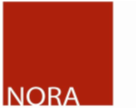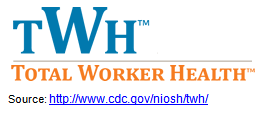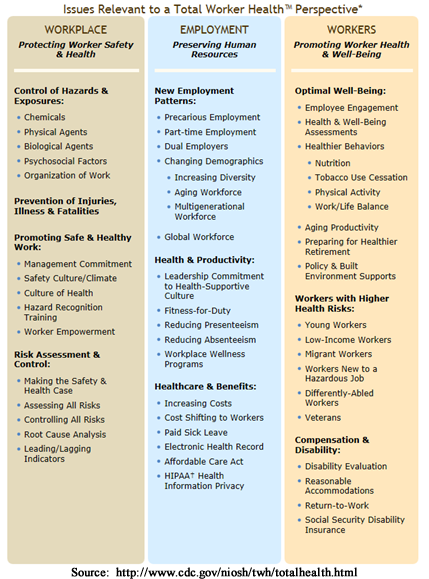Online Course
NRSG 780 - Health Promotion and Population Health
Module 12: Environmental Health, Occupational Health, Unintended Injuries and Violence
Population-based Initiatives to Reduce the Burden of Occupational Health Issues
National

The National Occupational Research Agenda (NORA) is a partnership program to foster innovative research and improved workplace practices. Since 1996 NORA has served as the research agenda for NIOSH and the nation.
NORA Priorities are based on:
- Number of workers at risk for a particular injury or illness
- Seriousness of the hazard or issue
- Probability that new information and approaches will make a difference
NORA is comprised of ten sectors that include:
- Agriculture, Forestry and Fishing
- Construction
- Healthcare and Social Assistance
- Manufacturing
- Mining
- Oil and Gas Extraction
- Public Safety
- Services
- Transportation, Warehousing and Utilities
- Wholesale and Retail Trade
The Healthcare and Social Assistance program includes an estimated 21 million paid workers in ambulatory healthcare services, hospitals, nursing and residential care facilities, veterinary health care, and social assistance settings who face risks including infectious diseases, musculoskeletal disorders, workplace violence, exposure to hazardous drugs and other chemicals, shift-work and psycho-social stressors. The Healthcare and Social Assistance program works with partners in industry, labor, trade associations, professional organizations, and academia. The program targets:
- Identifying interventions to improve work organization, safety culture and well-being
- Reducing stress, anxiety, depression, fatigue, burnout, substance use disorders, and suicides
- Preventing injuries from lifting, falls, sharp instruments, and a variety of physical hazards
- Interrupting transmission of pathogens and drug-resistant organisms
- Minimizing exposure to substances associated with risk for cancer, adverse reproductive outcomes, dermal diseases, and work-related asthma
- Reducing injuries associated with violencce
For additional information on the National Healthcare and Social Assistance Agenda, click on https://www.cdc.gov/niosh/research-programs/portfolio/hcsa.html.
To review the workplace violence prevention course designed specifically for nurses developed by a team of experts including the SON’s Jane Lipscomb, PhD, RN, FAAN, emeritus professor, Community/ Public Health, click here.
For information on priorities for other NORA sectors, click here.
Total Worker Health (TWH) Program

In 2011, NIOSH launched the Total Worker Health (TWH) Program which integrates occupational safety and health protection with health promotion to prevent worker injury and illness and to advance worker health and well-being. TWH involves the comprehensive development and implementation of organizational programs, policies and practices that minimize or eliminate workplace physical, biological and psychosocial hazards and risks, promote healthy behaviors and provide resources for maintaining and optimizing a safe, healthy and productive workforce on and off of the job.
TWH strategies and interventions include:
- Provision of mandated respiratory protection programs that simultaneously and comprehensively address and provide supports for tobacco cessation
- Ergonomic consultations that discuss work design, joint health and arthritis prevention and management strategies
- Provision of onsite, comprehensive workplace screenings for work and non-work related health risks
- Models that combine occupational health services with workplace primary care
- Regular communication and demonstration of senior leadership and management commitment to support a culture of health of safety and health across the organization
- A systems-level approach that coordinates the organizational alignment (i.e., reporting, funding) of traditional safety and environmental health programs, occupational health clinics, behavioral health, workplace health promotion programs, health benefits and compensation and disability management

For more information click on the required reading on TWH at https://www.cdc.gov/niosh/twh/about/?CDC_AAref_Val=https://www.cdc.gov/niosh/twh/totalhealth.html
Statewide Programs
Maryland Occupational Safety and Health (MOSH) is housed within the Maryland Department of Labor, Licensing and Regulation. Its mission is to promote and assure workplace safety and health and reduce workplace fatalities, injuries and illnesses. MOSH has jurisdiction over all public and private sector workplaces in the state, with the exception federal employees and private sector maritime activities which are covered under OSHA jurisdiction. MOSH focuses on serious hazards and dangerous workplaces; it enforces workplace laws and regulations, conducts inspections, provides consultation services and compliance assistance, offers outreach, education and cooperative programs and maintains statistical data on fatal and non-fatal workplace injuries and illnesses. The MOSH Strategic Plan for 2018-2022 available at https://labor.maryland.gov/labor/mosh/moshplan23-27.pdf identifies the following goals:
- Improve workplace safety and health through compliance assistance and enforcement of occupational safety and health regulations
- Promote a safety and health culture through compliance assistance, cooperative programs and strong leadership
- Secure public confidence though excellence in the development and delivery of MOSH programs and services.
For more information on MOSH view the YouTube video at http://www.dllr.state.md.us/labor/mosh/moshvideos.shtml
This website is maintained by the University of Maryland School of Nursing (UMSON) Office of Learning Technologies. The UMSON logo and all other contents of this website are the sole property of UMSON and may not be used for any purpose without prior written consent. Links to other websites do not constitute or imply an endorsement of those sites, their content, or their products and services. Please send comments, corrections, and link improvements to nrsonline@umaryland.edu.